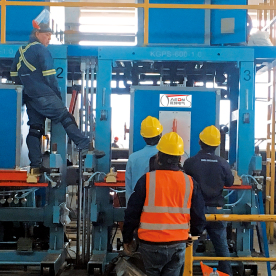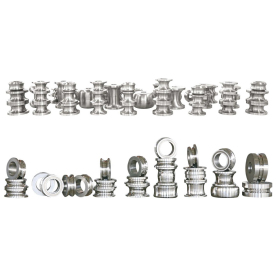[High-efficiency induction heating equipment]Exploring the Benefits and Innovations of High-Efficiency Induction Heating Equipment in Modern Industrial Applications
News 2024-8-12
****Induction heating has emerged as a revolutionary heating technology that offers a myriad of benefits across various industries. High-efficiency induction heating equipment is at the forefront of this technological advancement. It provides precision, energy savings, and a safer operating environment, making it a preferred choice for processes such as metal hardening, brazing, soldering, and heat treating. This article delves into the working mechanisms, advantages, applications, and future prospects of high-efficiency induction heating equipment.
Understanding Induction Heating

Exploring the Benefits and Innovations of High-Efficiency Induction Heating Equipment in Modern Industrial Applications
Advantages of High-Efficiency Induction Heating Equipment
One of the most significant advantages of high-efficiency induction heating equipment is its energy efficiency. Traditional heating methods often waste a considerable amount of energy through radiation and convection. In contrast, induction heating minimizes energy loss, as the heat is generated directly within the workpiece. This efficiency leads to reduced energy consumption, lowering operational costs for manufacturers.
Moreover, induction heating provides precise control over the heating process. Operators can adjust parameters such as power, frequency, and heating time to achieve desired temperatures and properties within milliseconds. This level of control results in improved product quality and consistency, crucial in industries where precision is paramount, such as automotive and aerospace.
Another noteworthy benefit of induction heating is the safety it provides. High-efficiency induction heating equipment produces heat without open flames or combustible materials, reducing the risk of fire and enhancing workplace safety. Additionally, the localized heating minimizes the heat-affected zones, preserving the integrity of surrounding materials and components.
Applications of High-Efficiency Induction Heating Equipment
The versatility of high-efficiency induction heating equipment enables its application in various industrial processes. In the metalworking industry, induction heating is commonly used for hardening, tempering, and annealing steel components. The process allows for rapid heating and cooling cycles, resulting in enhanced mechanical properties without compromising structural integrity.
Induction brazing is another application where this technology shines. It is widely used in joining metals to improve product performance and lifespan. Industries such as HVAC, electronics, and jewelry manufacturing rely on high-efficiency induction heating for consistent and reliable brazing of components.
The automotive sector also benefits significantly from induction heating. It plays a vital role in manufacturing processes such as shrink fitting, where components are heated before assembly to ensure a tight fit upon cooling. This method is faster and more efficient compared to alternatives like flame heating, which can lead to distortion and irregularities.

Exploring the Benefits and Innovations of High-Efficiency Induction Heating Equipment in Modern Industrial Applications
The evolution of high-efficiency induction heating equipment has been marked by continuous innovations. Recent advancements in technology have integrated smart features, enabling real-time monitoring and data analysis of the heating process. These smart induction systems allow operators to track performance metrics, optimize heating cycles, and minimize downtime.
Wireless technology has also made its way into induction heating, allowing for remote operation and control. This remote functionality not only enhances the user's convenience but also improves safety by reducing operator exposure to extreme temperatures and hazardous environments.

Exploring the Benefits and Innovations of High-Efficiency Induction Heating Equipment in Modern Industrial Applications
Conclusion
High-efficiency induction heating equipment stands as a testament to innovation and efficiency in modern industrial processes. Its capacity for energy savings, precision heating, and safety features positions it as an essential tool across various sectors. As technology continues to advance, the potential applications and benefits of induction heating will only continue to grow. Industries that adopt this cutting-edge technology will likely see improved operational efficiency, product quality, and sustainability in their manufacturing processes.
